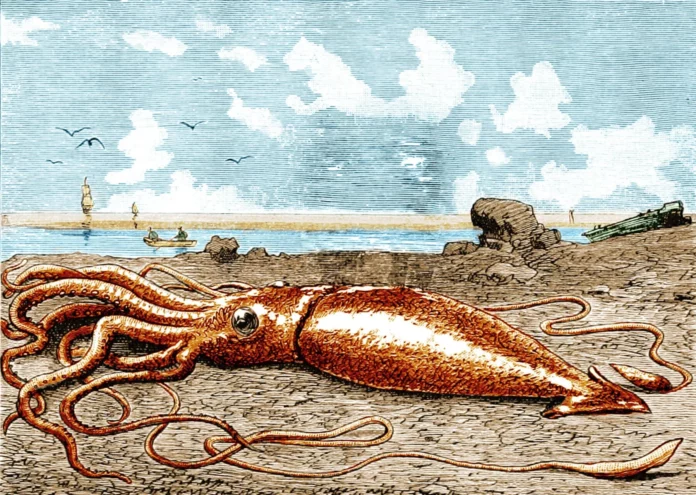There are many species of squids inhabiting all the world’s oceans. Some are well-known and widely consumed by humans, while others are hardly studied at all. There are deep-sea species of these mollusks that live in places where sunlight never reaches, and very little reliable information is known about them.
Facts About Squids:
- Some squids have eyes of different sizes on the right and left sides. This is not by chance—different eyes capture light of varying intensities, helping the squid navigate its surroundings.
- They have three hearts. Two of them serve a supporting function, pumping blood to the main heart, which then circulates it to other organs.
- The squid Octopoteuthis deletron, living at depths of up to 800 meters, has a very brief period of sexual maturity. As a result, males have developed a reproductive strategy where they don’t distinguish between females and other males. When they encounter a squid of any gender in the dark, they attack and cover it with spermatophores, which are capsules containing sperm.
- Squids have blue blood, not red. The red color of our blood comes from iron, but in squids, oxygen is carried by copper instead of iron.
- The Pacific Ocean is home to so-called flying squids. They accelerate underwater and leap to the surface, gliding for 20-30 meters.
- All species of squids have 10 tentacles. Eight are used for various tasks, while two, the strongest and longest, are used to catch prey.
- Many small species of squids inhabit surface waters. The deeper you go, the larger they become.
- Squids that live in cold polar waters have semi-transparent bodies, similar to some fish that inhabit similar environments.
- Scientists know of about 300 species of squids, but they believe there are nearly twice as many, with many yet to be studied. Some are likely still undiscovered.
- Squids are the least studied of all deep-sea creatures.
- Squids do not live in freshwater. They can only survive in saltwater.
- The largest species is the giant squid, which can reach lengths of 13-14 meters. It is found only in the Southern Ocean.
- The second largest in size and the heaviest in mass are Architeuthis squids. They can grow up to 8-10 meters long and weigh up to 500 kg.
- Some species of these sea creatures spend their entire lives in complete darkness, at depths of thousands of meters. Sunlight penetrates only the top 100-200 meters of water.
- The first successful video recording of a live giant squid was made in 2006.
- All squids are predators, but they often fall prey to other animals as well. Zoologists estimate that about 1% of the diet of all sea creatures consists of squids, mainly smaller species.
- While their brains are small, squids have a relatively high level of intelligence and can indeed think. Their brain is located in the hardest part of their body, in the cartilaginous part of the head.
- Many squids are notorious cannibals. They are always ready to eat even members of their own species.
- The largest squids have suckers that can be about 5 centimeters in diameter. Some species even have claws at the ends of their tentacles!
- Giant squids have neutral buoyancy, which allows them to feel very confident in the water. In contrast, most of their smaller relatives “sink,” so they must constantly move to avoid descending too deep.
